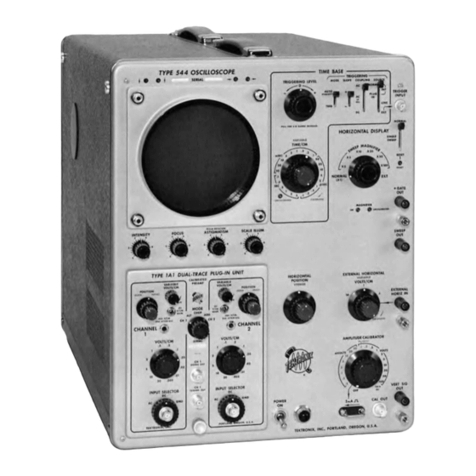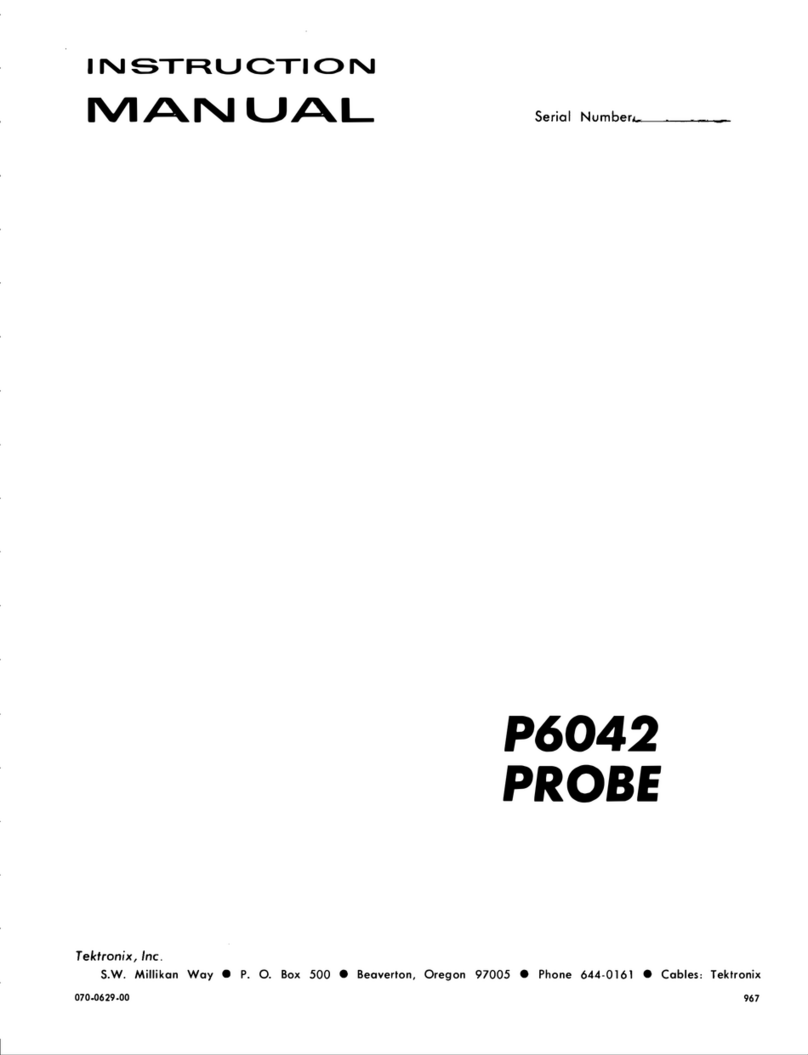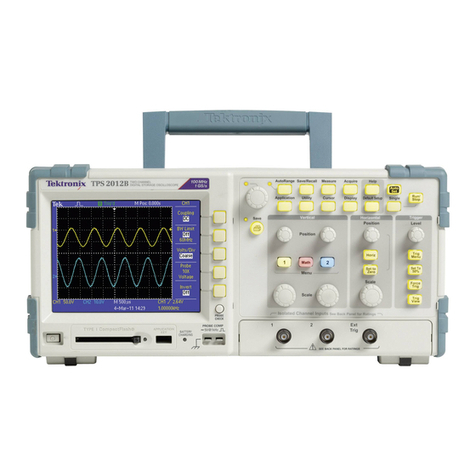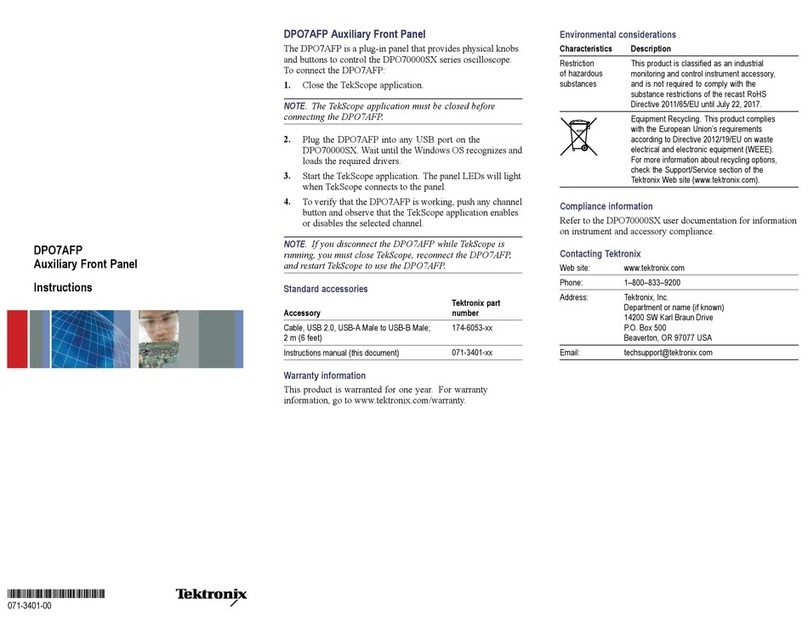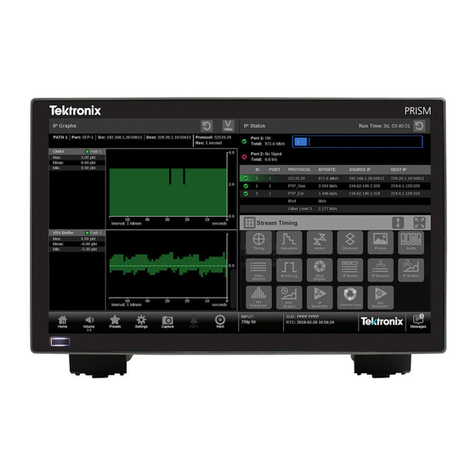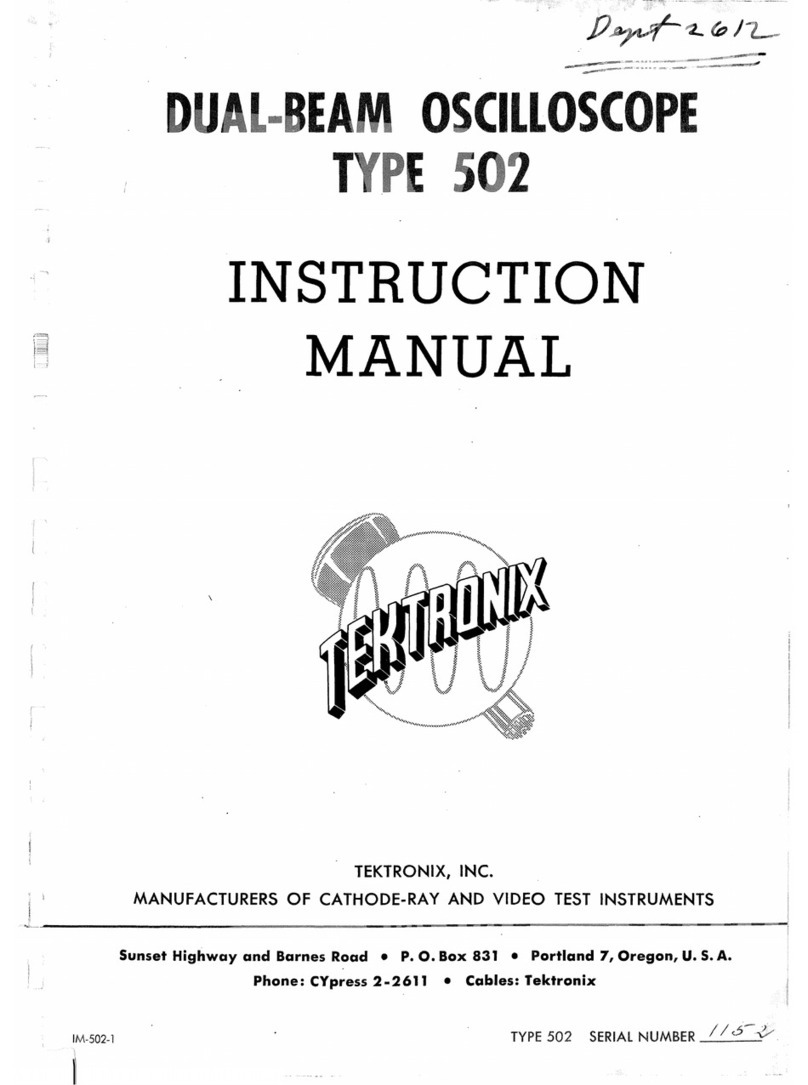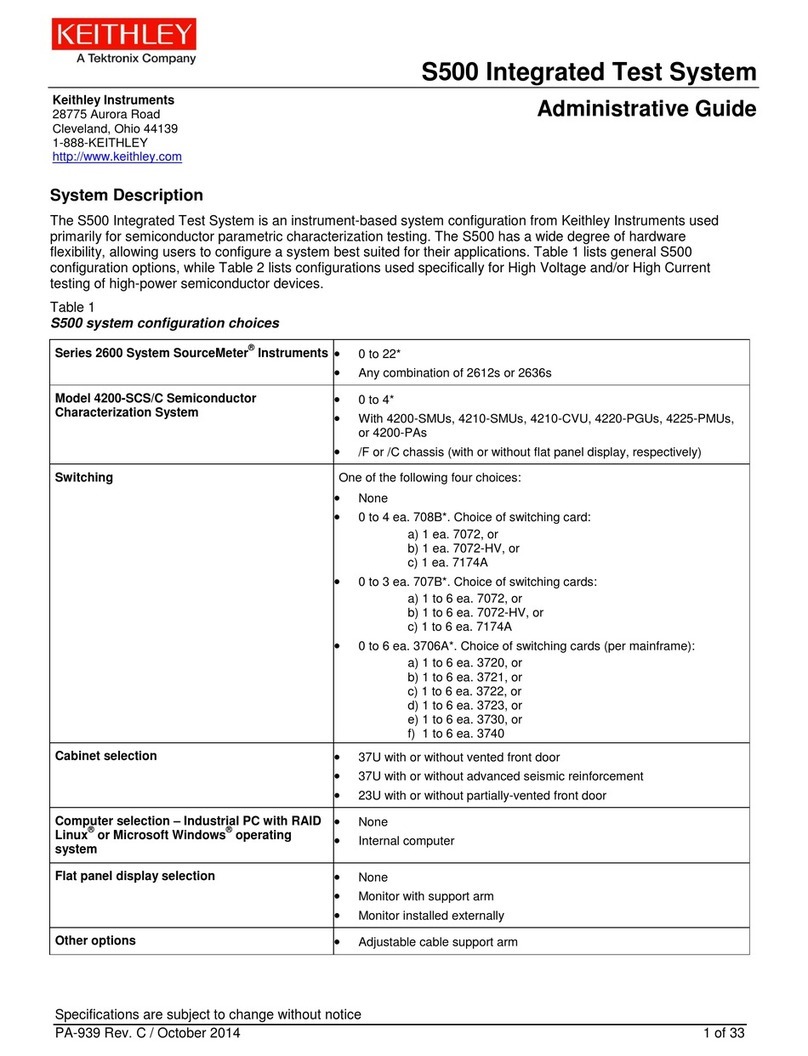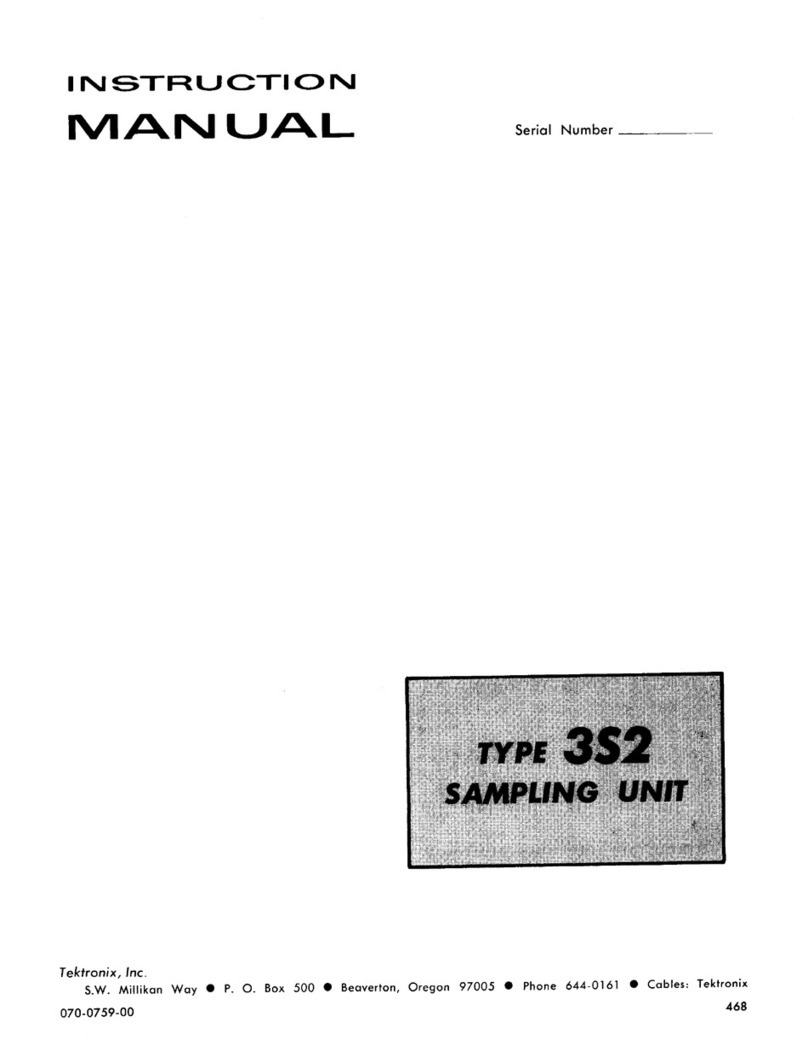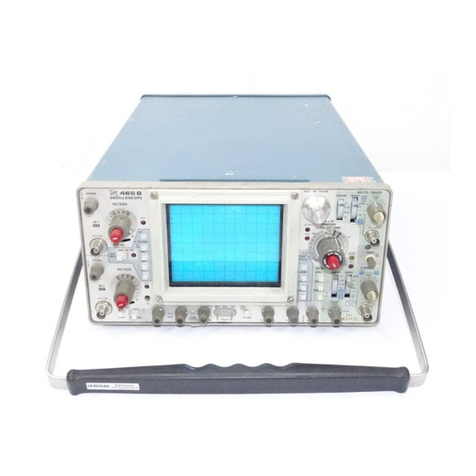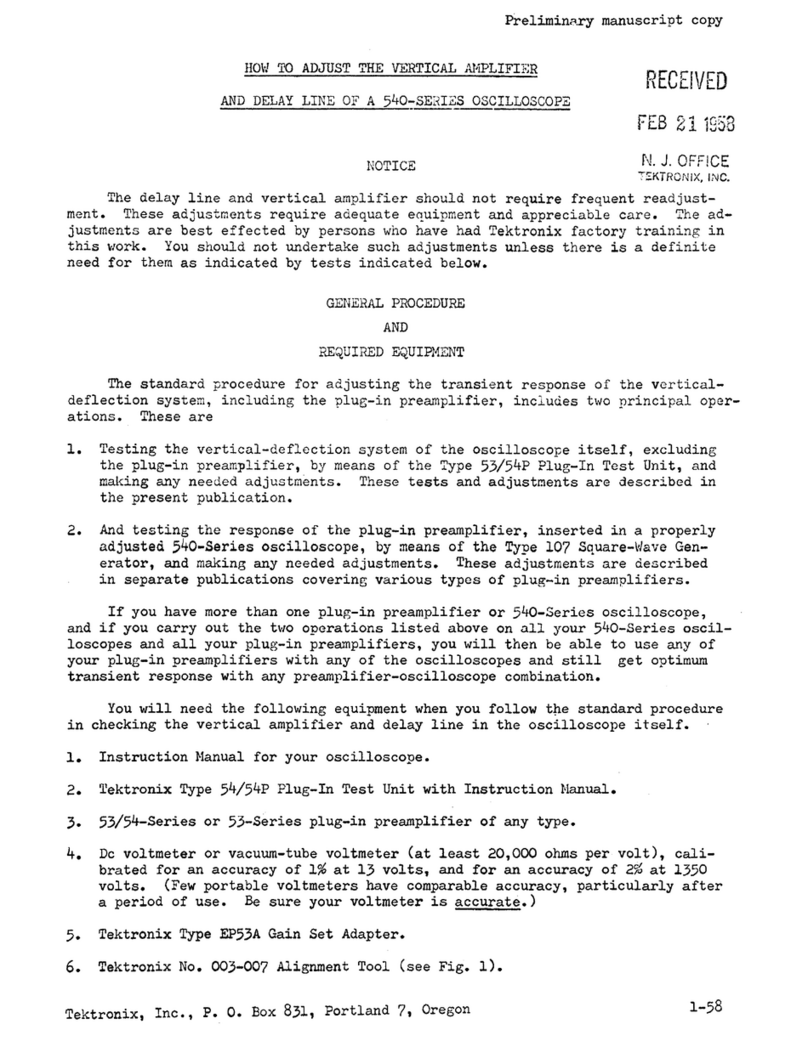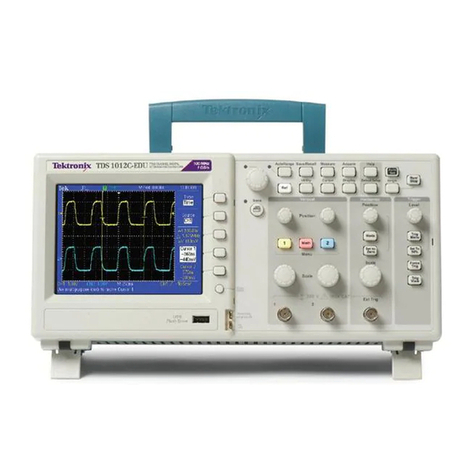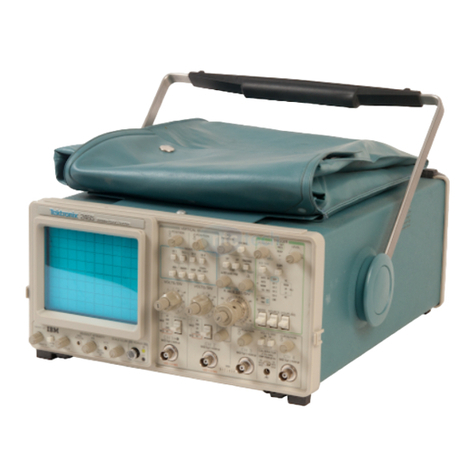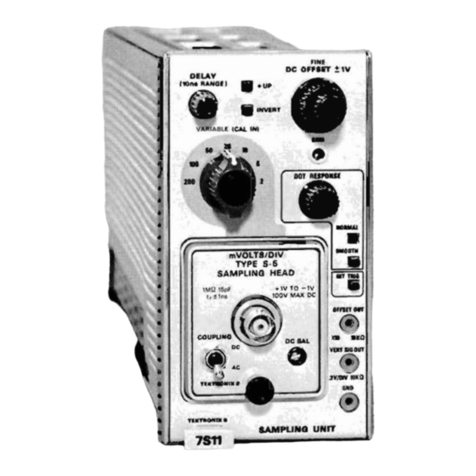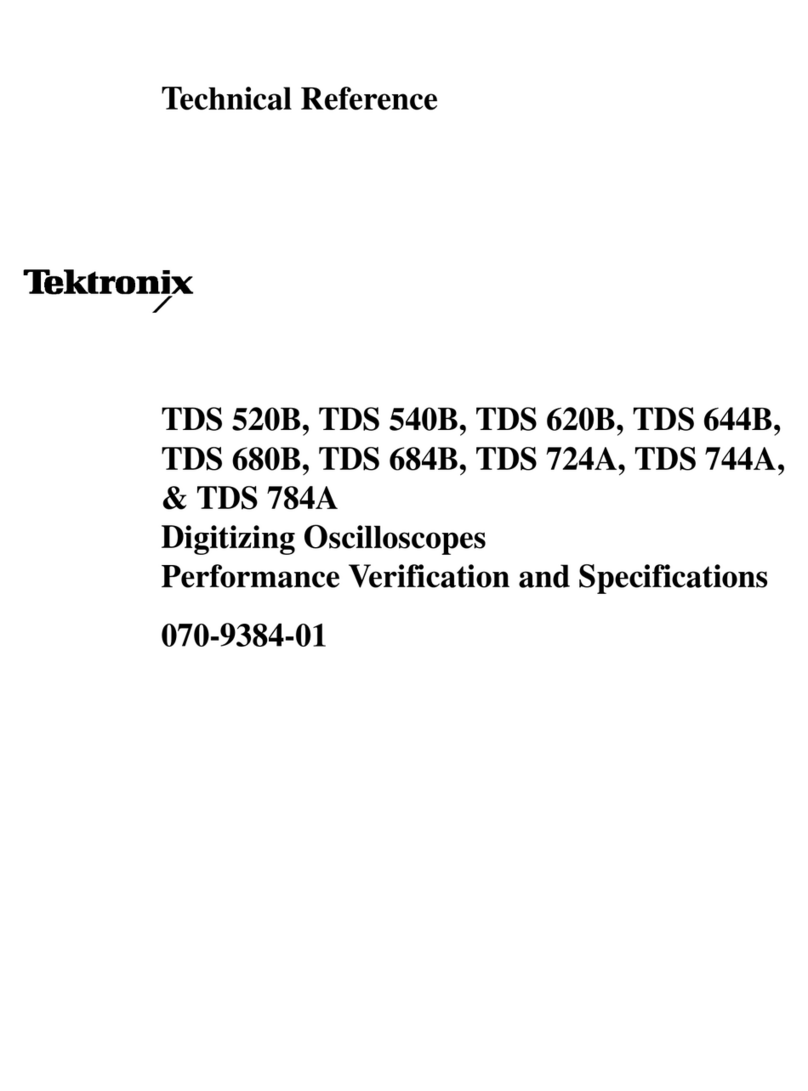
Type 321A
SECTION I
CHARACTERISTICS
Introduction
The Tektronix Type 321A is a high-performance, dc-to-6
me, transistorized oscilloscope. Its light weight, small size
and ability to operate from a variety of power sources make
it a versatile field and laboratory instrument. The oscillo
scope can operate from its internally-contained rechargeable
battery pack, an external dc source or from a 115/230-volt
50-800 cycle ac line. Regulated power supplies in the instru
ment, accurate calibration, and precise linearity assure exact
time and amplitude measurements despite normal voltage-
source and power-supply-load changes that occur under
actual operating conditions.
Operating temperature range derived from tests indicates
optimum performance and reliability on its self-contained
batteries from 0° to + 0° C at altitudes up to 15,000 feet.
Temperature range without bolteries when operating from an
external source is —-15* C to +55° C. Non-operating tem
perature range is —55° C to -75* C without batteries
and — 0* C to + 0° C with batteries at altitudes to
50.000 feet.
For the operator's convenience, a front-panel battery light
indicates when the internal batteries are low. If external dc
or ac operation is being used insteod of the batteries, the
light turns on if the external voltage source drops too low
for proper power supply regulation.
A -position power switch on the front panel permits
convenient selection of charging rate and/or power source.
Vertical Deflection System
Bandpass—Dc to at least 6 me (3-db down) using dc cou
pling; using ac coupling, low-frequency 3-db down point
is 2 cps typical from a 1-kc reference.
Sensitivity—0.01 v/div to 20v/div in 11 calibrated steps;
accuracy is within 3% of front-panel markings. Con
tinuously variable from 0.01 v/div to about 50 v/div
uncalibrated.
Input Impedance—35 pf nominal paralleled by 1 megohm
|r.trl%), 8.2 pf nominal paralleled by 10 megohms
(+:2%i when using the P6006 10X Probe.
Maximum Allowable Input Voltage Rating—600 volts com
bined dc and peak ac; 600 volts (not 1200 volts) peak-to-
peak ac.
Triggering
Type—Automatic, or amplitude-level selection using pre
set stability.
Mode—Ac-coupled or Dc-coupled.
Slope—Plus, from rising slope of triggering waveform, or
minus from negative slope of triggering waveform.
Source—Internal from vertical signal, or external from
triggering signal.
Signal Requirements—Internal: 0.2 major division vertical
deflection at 1 kc increasing to 1 major division at 6 me.
External: 1 volt peak-to-peak at 1 kc increasing to 3 volts
peak-to-peak at 6 me. Nominal input impedance: 5 pf
paralleled by 100 kilohms (±20%).
Sweep
Type—Miller Integrator.
Sweep Rates—0.5 /isec/div to 0.5sec/div in 19 calibrated
steps. Accurate 5X sweep magnifier extends calibrated
range to 0.1 psec/div. Calibrated sweep-rate accuracy
is ±-3%. Sweep lime adjustable between steps and to
>1.5sec/div uncalibrated.
External Horizontal Input
Bandpass—Dc to at least 1 me (3-db down).
Deflection Factor—1 v/dv drl0% with 5X magnifier on.
Input Impedance—30 pf typical paralleled by 100 kilohms
(± 5 % ).
Amplitude Calibrator
Square Wave—Frequency about 2 kc.
Amplitude—500 mv peak-to-peak. Also 0 mv peak-to-
peak internally coupled in CAL DIV position of VOLTS/
DIV switch. Peak-to-peak amplitude accuracy is r+3%.
Cathode-Ray Tube
Type—Special Tektronix-manufactured T3211. 3" flat-face,
post-deflection accelerator. Low heater power.
Accelerating Potential— kv.
Z-Axis Modulation—External terminal permits RC coupling
to ert grid.
Unblanking—Deflection unblanking.
Phosphor—Type P31 normally furnished; PI, P2, P7, and
PI 1 phosphors optional. Other phosphors furnished on
special order.
Graticule
Illumination—Variable edge lighting when operating from
ac line.
Display Area—Marked in 6-vertical and 10-horizontal y "
divisions.
Power Requirements
Source—Operates from 10 size D flashlight cells, or 10
size D rechargeable cells (approximately 3 hours using
2.5 ampere-hour cells,- approximately 5 hours using
1-1
